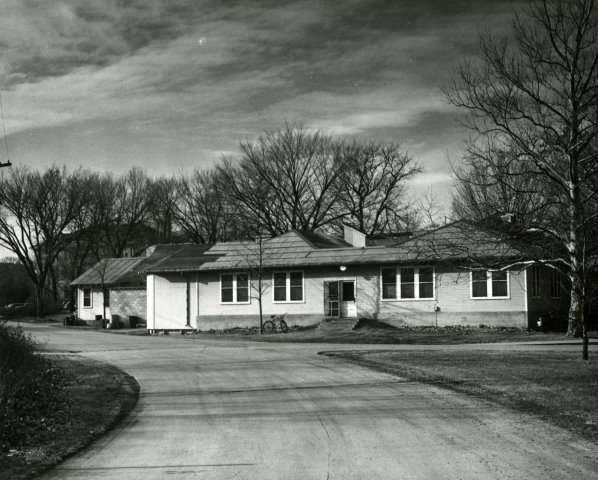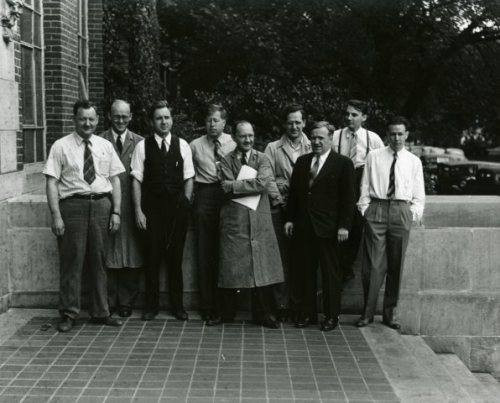Ames, IA

Several sites in Iowa played an important role during and after the Manhattan Project, including the Ames Laboratory at the Iowa State University, where uranium production methods were developed, and the Burlington Atomic Energy Commission Plant, where atomic weapons were first assembled by the AEC.
The Ames Project
The discovery of nuclear fission in 1939 necessitated advanced research on the chemical properties of uranium and other rare radioactive elements and isotopes that had only recently been discovered. In 1942, Frank Spedding of Iowa State College, an expert in the chemistry of rare earth elements, agreed to establish and direct a chemical research and development program to accompany the Manhattan Project’s existing physics program.
The Ames Project, as it came to be known, was responsible for producing high purity uranium from uranium ores. The Ames group, led by chemist Harley A. Wilhelm, developed a new method for reducing and casting uranium metal, making it possible to cast large ingots of the rare metal at a significantly lower cost.
The Ames Project provided about one-third, or around two tons, of the uranium used in the first-self-sustaining nuclear reaction at the University of Chicago in December 1942. The Ames Project produced more than 1,000 tons of uranium for the Manhattan Project between 1942 and 1945. The uranium production process developed at Ames is still used today.
On October 12, 1945, the Ames Project was awarded the Army/Navy E Flag for Excellence in Production of metallic uranium as a vital war material, an honor normally given to industry rather than educational institutions.
 Ames Laboratory
Ames Laboratory
The Atomic Energy Commission formally established Ames Laboratory in 1947 as a result of the Ames Project’s success. During the 1950s, scientists at Ames studied nuclear fuels and structural materials for nuclear reactors. The innovative processes developed at Ames resulted in the production of the purest rare-earth metals in the world while at the same time significantly reducing the price of these metals. Ames Laboratory employed roughly 12,000 workers during its years in nuclear research.
Today, Ames Laboratory is a United States Department of Energy national laboratory affiliated with Iowa State University. The Laboratory conducts important research into various areas of national concern, including energy resources, high-speed computing, environmental cleanup, and the synthesis of new materials.
Iowa Army Ammunition Plant (IAAP)
The Iowa Army Ammunition Plant located in Middletown, IA was originally established in November 1940 as the Iowa Ordnance Plant and started production shortly before the Japanese attack on Pearl Harbor in 1941. The plant manufactured a variety of munitions for the war, including tank ammunition, high explosive artillery, large caliber mortars, mines, and missile assembly.
The facilities at the plant spanned across 19,000 acres with over 750 buildings and a storage capacity of over one million square feet. There are also more than 140 miles of roads and over 100 miles of railroads linking the facilities together. Production at the plant was stopped after World War II ended in 1945, but was resumed again in 1947 when the US Atomic Energy Commission assumed responsibility.
Burlington Atomic Energy Commission Plant (BAECP)
When the Korean War broke out in 1950, production at the plant increased and its name changed to the Burlington Atomic Energy Commission Plant. A year later, the BAECP became the first plant in the United States to assemble atomic weapons for the AEC. Nuclear weapons were assembled, disassembled, modified, and tested at the plant until 1975, when production was transferred to the Pantex Plant in Amarillo, Texas.




